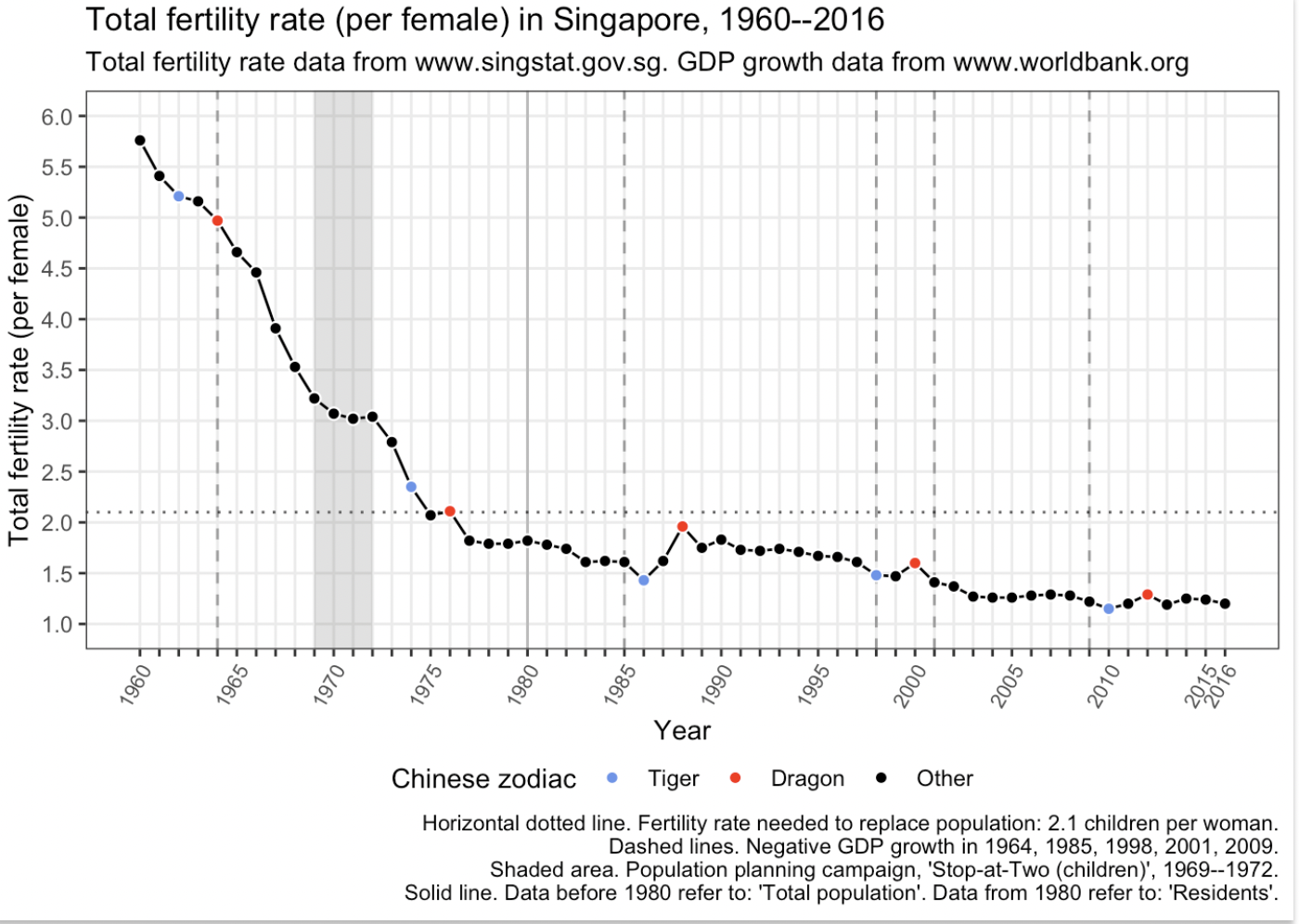Imagine a future where the birth rate is so low that it fails to replace the existing population.
The implications of such a scenario are significant, and, unfortunately, this is not a hypothetical situation.
It is a reality unfolding in Singapore, and the situation is deteriorating.
Singapore’s Total Fertility Rate Hits Record Low, Falling Below 1 for the First Time
Today (28 February), in Parliament, Minister in the Prime Minister’s Office (PMO) Indranee Rajah revealed that preliminary estimates indicate a resident TFR of 0.97 in 2023.
This marks the first time in Singapore’s history that the TFR has dropped below 1.
To maintain a stable population size, a TFR of 2.1 is needed—this level allows a population to replace itself.
TFR measures the average number of children a woman is expected to have during her reproductive years, and in Singapore, this number has continued its downward trend, falling from 1.04 in 2022 and 1.12 in 2021.
This latest figure places Singapore among the countries with the lowest birth rates globally, with South Korea leading the list at a TFR of 0.72 in 2023.

Singapore faces the twin demographic challenges of a persistently low fertility rate and an ageing population. These challenges, however, are not unique to Singapore. For instance, European countries like Italy and Spain continue to see a record low number of births year-on-year. Similarly, neighboring countries such as Malaysia and Thailand also experienced declines in their fertility rates in 2022.
Ms Indranee, who oversees the National Population and Talent Division within the Strategy Group in the PMO, shared that there were 26,500 resident marriages and 30,500 resident births in 2023. However, she noted that, on average, there have been fewer resident marriages and births annually over the last five years compared to the previous five-year period.
Reasons Why Singaporeans Aren’t Making Babies
Several reasons have been cited for Singapore’s low fertility rate, including temporary factors such as the COVID-19 pandemic, which disrupted some couples’ plans for marriage and parenthood.
Other concerns include the financial costs of raising a child, the pressure to be an excellent parent (kiasu parents, indeed), and the difficulties of balancing work and family commitments. This decline reflects a generational shift in priorities, with many young people not viewing marriage or parenthood as important life goals.
The consequences of falling TFR are profound for Singapore’s future.
Families are shrinking, and an increasing number of couples find themselves caring for both their children and elderly parents. A diminishing birth rate means a shrinking workforce, posing significant challenges to maintaining economic dynamism, attracting global businesses, and creating opportunities for future generations.
Countries such as South Korea and Italy have already faced economic slowdowns and falling wages, further exacerbated by low fertility rates and demographic shifts.
In response to these challenges, the Singapore Government announced various measures in 2023 to support marriage and parenthood. These measures include doubling the government-paid paternity leave to four weeks from January 1 and increasing Baby Bonus benefits.
Furthermore, the adoption of flexible work arrangements is being promoted to help working parents balance their job and family commitments.
A tripartite workgroup is developing guidelines on flexible work arrangements, which will become compulsory for employers to follow once implemented later in 2024.
Would the Dragon Year Create a Miracle?
Despite the grim outlook, there is a glimmer of hope associated with the Year of the Dragon this year.
In cultures with a significant Chinese population, including Singapore, the Year of the Dragon often sees a “baby boom” due to the auspicious nature of the dragon symbol. This phenomenon, occurring every twelve years, stands out as a notable exception to the trend of falling birth rates, as evidenced by statistical spikes in birth numbers during Dragon Years.

However, while this may offer a temporary uplift in birth rates, achieving a TFR of 2.1 would require something akin to a miracle.
As to whether Dragon Babies really do well in life, you might want to watch this to the end:




